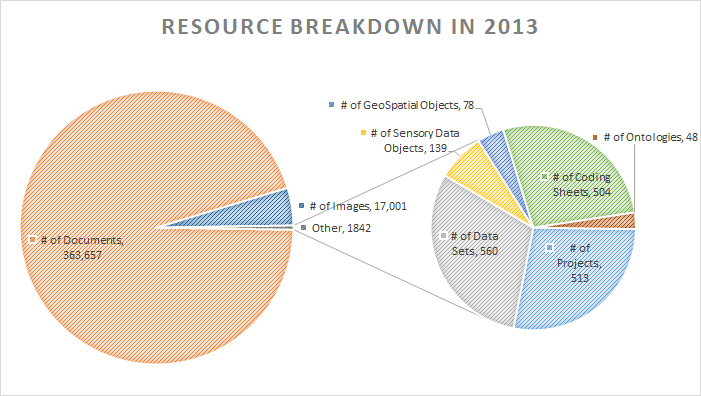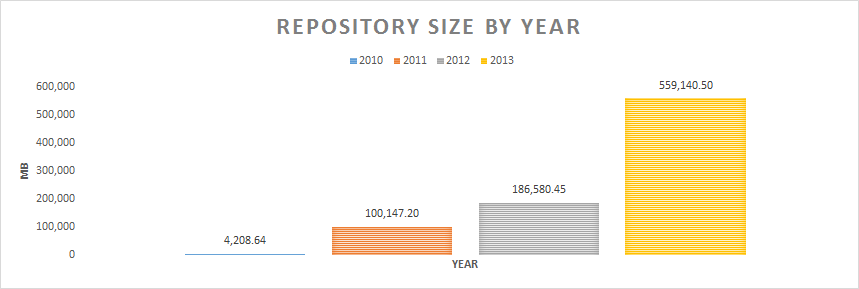In a recently published paper in American Antiquity, Kintigh and colleagues describe an effort to identify “What are archaeology’s most important scientific challenges?” This question was posed to the archaeological community to crowd source key themes, and the results were used to inform and augment the topics developed by an esteemed group of scholars. The top 25 “grand challenges” they identified are replicated at the end of this post.
What the authors argue is most needed to address these important research questions is not more data (though, undoubtedly some new field work will be undertaken), but rather, a discipline-wide effort to locate, synthesize, and interpret the extensive amounts of data that have been collected through extensive archaeological efforts to date. tDAR’s data integration tools have been developed and refined with these tasks in mind, and the repository is capable of serving as a storage facility for the data and the supplementary information that support them.
Data sets archived in tDAR can include detailed column metadata describing the data so that researchers unfamiliar with the data set are still able to understand and reuse the data. Furthermore, multiple discrete data sets can be integrated into large, synthetic data sets using tDAR’s data integration tools. In addition, data sets in tDAR are afforded the myriad other benefits to being archived in tDAR—archaeologically specific metadata and long-term preservation with forward migration to ensure that data files are accessible and usable long into the future.
Get started today! Add your data sets to tDAR, find others, and begin synthetic analysis!
Archaeology’s Grand Challenges
Emergence, communities, and complexity
- How do leaders emerge, maintain themselves, and transform society?
- Why and how do social inequalities emerge, grow, persist, and diminish, and with what consequences?
- Why do market systems emerge, persist, evolve and, on occasion, fail?
- How does the organization of human communities at varying scales emerge from and constrain the actions of their members?
- How and why do small-scale human communities grow into spatially and demographically larger and politically more complex entities?
- How can systematic investigations of prehistoric and historic urban landscapes shed new light on the social and demographic processes that drive urbanism and its consequences?
- What is the role of conflict—both internal factional violence and external warfare—in the evolution of complex cultural formations?
Resilience, persistence, transformation, and collapse
- What factors have allowed for differential persistence of societies?
- What are the roles of social and environmental diversity and complexity in creating resilience and how do their impacts vary by social scale?
- Can we characterize social collapse or decline in a way that is applicable across cultures, and are there any warning signals that collapse or severe decline is near?
- How does ideology structure economic, political, and ritual systems?
Movement, mobility, and migration
- What processes led to, and resulted from, the global dispersal of modern humans?
- What are the relationships among environment, population dynamics, settlement structure, and human mobility?
- How do humans occupy extreme environments, and what cultural and biological adaptations emerged as a result?
- Why does migration occur and why do migrant groups maintain identities in some circumstances and adopt new ones in others?
Cognition, behavior, and identity
- What are the biophysical, sociocultural, and environmental interactions out of which modern human behavior emerged?
- How do people form identities, and what are the aggregate long-term and large-scale effects of these processes?
- How do spatial and material reconfigurations of landscapes and experiential fields affect societal development?
Human–environment interactions
- How have human activities shaped Earth’s biological and physical systems, and when did humans become dominant drivers of these systems?
- What factors drive or constrain population growth in prehistory and history?
- What factors drive health and well-being in prehistory and history?
- Why do foragers engage in plant and animal management, and under what circumstances does management of a plant or animal lead to its domestication?
- Why do agricultural economies emerge, spread, and intensify, and what are the relationships among productive capacity, population, and innovation?
- How do humans respond to abrupt environmental change?
- How do humans perceive and react to changes in climate and the natural environment over short- and long-terms?
Kintigh, Keith W., Jeffrey Altschul, Mary Beaudry, Robert Drennan, Ann Kinzig, Timothy Kohler, W. Frederick Limp, Herbert Maschner, William Michener, Timothy Pauketat, Peter Peregrine, Jeremy Sabloff, Tony Wilkinson, Henry Wright and Melinda Zeder
(2014) Grand Challenges for Archaeology. American Antiquity 79(1):5-24.
Kintigh, Keith W., Jeffrey H. Altschul, Mary C. Beaudry, Robert D. Drennan, Ann P. Kinzig, Timothy A. Kohler, W. Frederick Limp, Herbert D. G. Maschner, William K. Michener, Timothy R. Pauketat, Peter Peregrine, Jeremy A. Sabloff, Tony J. Wilkinson, Henry T. Wright and Melinda A. Zeder
(2014) Grand Challenges for Archaeology. Proceedings of the National Academy of Sciences 122:879-880.


